 cedars
cedars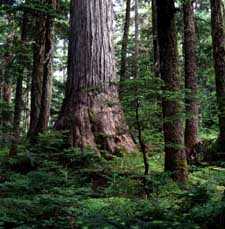 western hemlocks, giant maples
western hemlocks, giant maples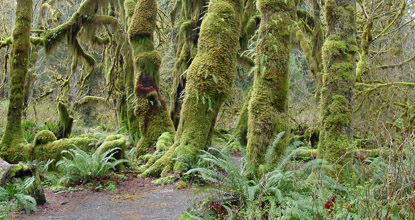 , vine maples
, vine maples , cottonwoods
, cottonwoods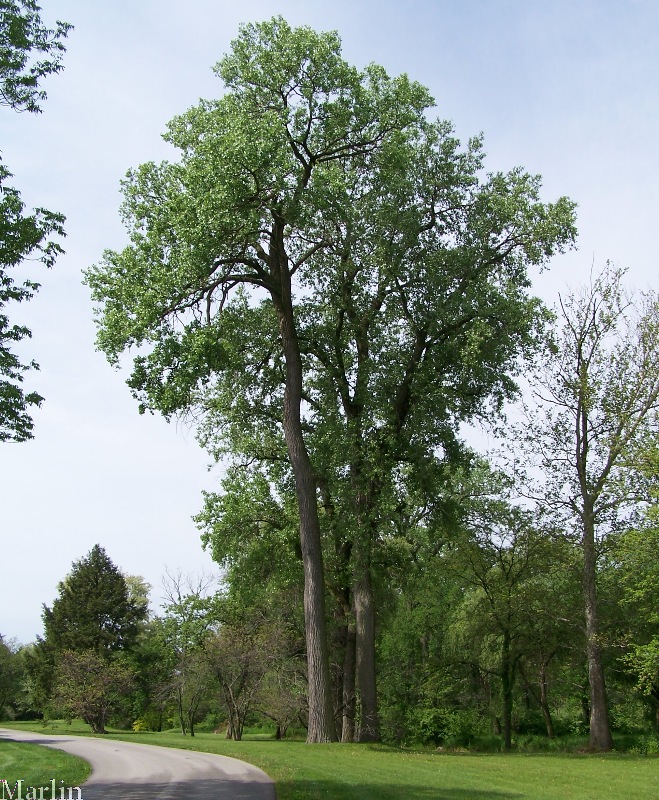 , (has anyone besides me ever noticed in early April the wonderful sublime fragrance of honey that fills the air as the cottonwoods begin to burst into leaf?)and more alders
, (has anyone besides me ever noticed in early April the wonderful sublime fragrance of honey that fills the air as the cottonwoods begin to burst into leaf?)and more alders than you could count or imagine. They are tall and graceful, not yet enormous and awe-inspiring. Ferns are everywhere. We have at least four varieties: fiddlehead,
than you could count or imagine. They are tall and graceful, not yet enormous and awe-inspiring. Ferns are everywhere. We have at least four varieties: fiddlehead, banned from being picked in spring when they are just about to unfurl because they are loved and coveted but not really that tasty and we want future generations of the graceful beauties to continue to flourish for everyone's enjoyment, and bracken
banned from being picked in spring when they are just about to unfurl because they are loved and coveted but not really that tasty and we want future generations of the graceful beauties to continue to flourish for everyone's enjoyment, and bracken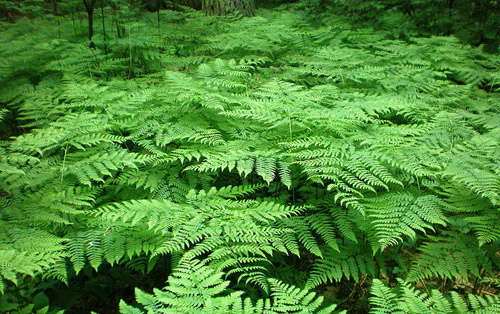 There are also three evergreen ferns: the sword ferns that grow in lavish clumps on the forest floor
There are also three evergreen ferns: the sword ferns that grow in lavish clumps on the forest floor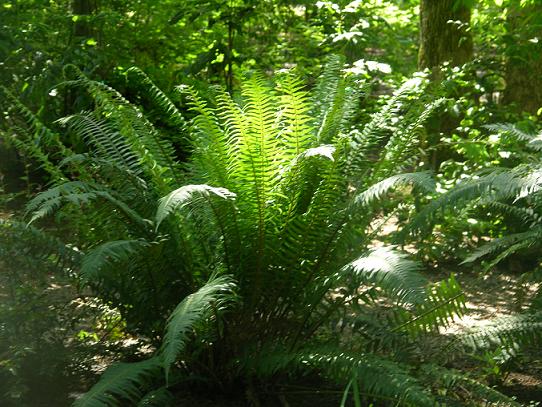 ; the smaller more delicate deer fern;
; the smaller more delicate deer fern; and the licorice ferns that grow up the trunks of maples and other trees throughout the city
and the licorice ferns that grow up the trunks of maples and other trees throughout the city . They were a favourite food with the First Nations People who would steam them in fire pits wrapping salmon. They are also good steamed and they do impart a licorice or fennel flavour. I know this because I sometimes have picked them myself.
. They were a favourite food with the First Nations People who would steam them in fire pits wrapping salmon. They are also good steamed and they do impart a licorice or fennel flavour. I know this because I sometimes have picked them myself.Salmonberries
 and huckleberries
and huckleberries flourish throughout on the forest floor. The salmonberries are already beginning to ripen and will be at their height in June. They are rather like raspberries, not quite as tart and make an excellent jelly with a rich wine-like flavour. I know this because I have often picked them and made jelly with them. The huckleberries are of the same family as the blueberries but the fruit is smaller and bright red, sweetly tart, or tartly sweet and they are ready for picking in July. The salal grow lower and their broad leathery evergreen leaves suggest laurel, their clustered black berries black currents, but sweeter and blander and an important food to our native people.
flourish throughout on the forest floor. The salmonberries are already beginning to ripen and will be at their height in June. They are rather like raspberries, not quite as tart and make an excellent jelly with a rich wine-like flavour. I know this because I have often picked them and made jelly with them. The huckleberries are of the same family as the blueberries but the fruit is smaller and bright red, sweetly tart, or tartly sweet and they are ready for picking in July. The salal grow lower and their broad leathery evergreen leaves suggest laurel, their clustered black berries black currents, but sweeter and blander and an important food to our native people.I was fourteen when I first became aware of this forest. My father, as part of his dad duty after he'd moved out of the house and Mom was preparing to divorce him, would take me on Sunday drives and sometimes we would drive around the forest. I noticed trails going in and asked my dad if we could go hiking in there sometime. He didn't want to. When I was seventeen I discovered the forest again. I was walking along the nonstop beach that begins just past Jericho and ends where Wreck Beach begins (for those of you who don't know my city Vancouver is on a peninsula that juts out into the ocean. We have many beaches, all open to public access and Pacific Spirit and UBC occupy the tip of the peninsula). To my left I saw the forest rising up and I decided to explore it. This place became my refuge, from the alder and maple forest on the north side and it's magical ravines to the evergreen forest that spreads across the peninsula.
When I was in grade twelve I wrote a letter to our then premier, Dave Barrett, pleading for the preservation of this beautiful forest. I received a reply from one of his assistants assuring me that the forest would be protected. Many circulated petitions, many of which I signed. Eventually the back hoes were removed and the majority of the forest, in 1989, was made a regional park. The forest remains untouched but the ambience has changed a bit. There are more trails now, and they are much better maintained, and of course there are more people. Word has got out. This is the great alternative to Stanley Park, our other urban forest, but bigger, wilder and more silent, since further removed from the city. Cyclists, joggers, dog walkers and hikers all share the trails and coexist more or less well. Some of the narrow trails are reserved and barricaded for pedestrians only. Young male cyclists are better behaved now and have restrained some of their testosterone so they have slowed down a bit and no longer such a threat to others on their mountain bikes. Off leash dogs can be a problem. I have estimated that at least once a year I am threatened by a badly trained off leash dog. Three years ago I actually had to fend off one particularly aggressive cur with a tree branch. He was as big as a Great Dane, but heavier and I think he might have been either a Great Dane-Mastiff cross or a particularly dangerous breed from Brazil. I can't remember the name of the breed but when I saw images of this dog on the internet it looked disturbingly like the mutt that wanted to make a happy meal of my arm. His brainless human, a young woman wearing dark glasses (in the forest? whatever for?) was not able to control him and only after my taking several swings at him with the tree branch did he back away and she could finally get a leash on him. Of course she was also begging me not to hurt her poor darling little poochie. I telephoned the parks board and there was someone there who very patiently helped me debrief with him. The dog situation does seem to have improved since the unfortunate incident.
I usually start walking in this forest in May, just after the Victoria Day weekend. Sometimes I feel drawn there every day, and will often head directly to Pacific Spirit Park after work to walk and commune with my friends the trees. There are some lovely cafes on the campus, my favourite is the Beanery, where I will often pass an hour reading or doing art work before resuming my hike in the woods. I have called this forest the lung of the Lower Mainland. It is a wonderful place to look at birds be they robins, eagles, huge woodpeckers
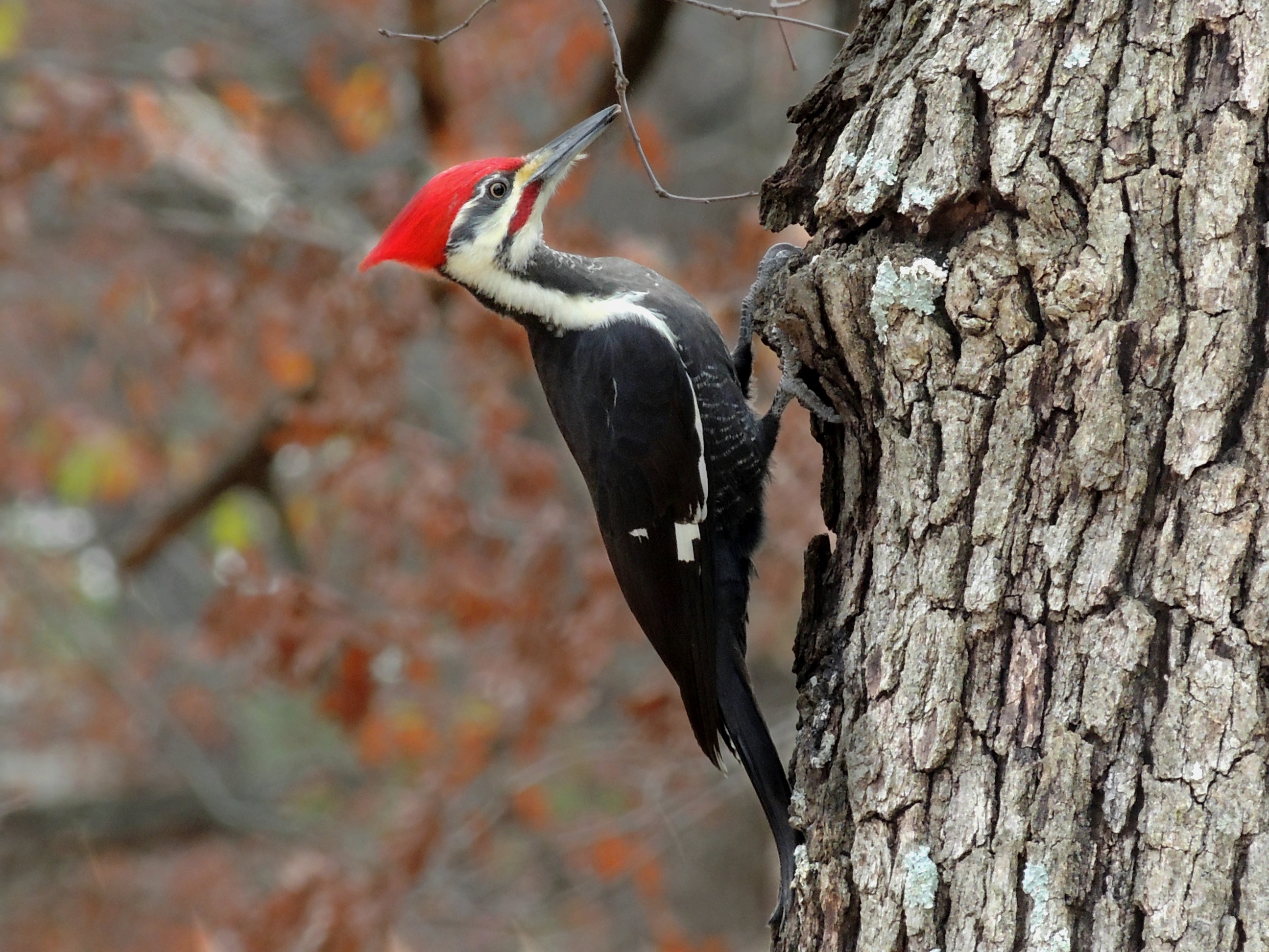 or obscure songbirds like the western tanager
or obscure songbirds like the western tanager  or the black headed grosbeak (I have also seen them in Mexico).
or the black headed grosbeak (I have also seen them in Mexico). 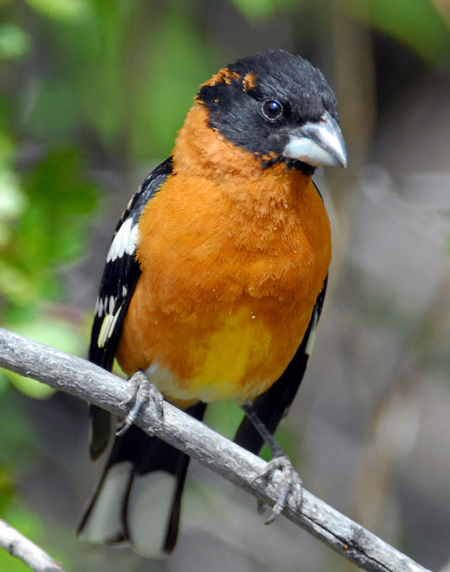 Once I saw a flock of black headed grosbeaks mobbing a huge barred owl perched on a tree branch.
Once I saw a flock of black headed grosbeaks mobbing a huge barred owl perched on a tree branch.As long as I live in Vancouver, and for as long as I am still able to walk I will always be hiking in this forest. It is a place of inspiration and a place of healing and it rejoices me to see that so many other people use and love this forest as I do and I hope it survives to nurture future generations, till the second growth trees have grown into their full gigantic maturity providing shelter and refuge for the ravens and their young.

No comments:
Post a Comment